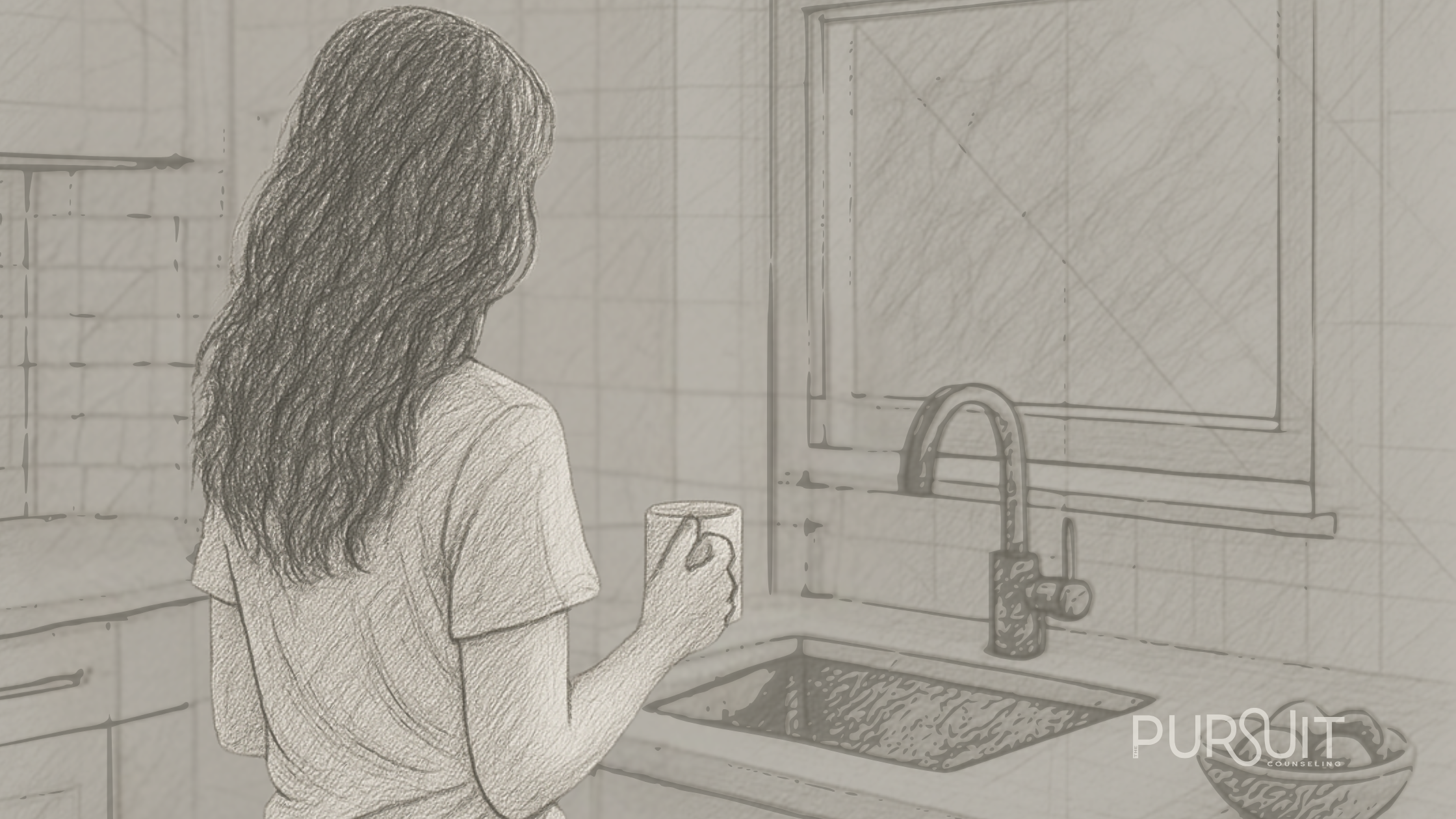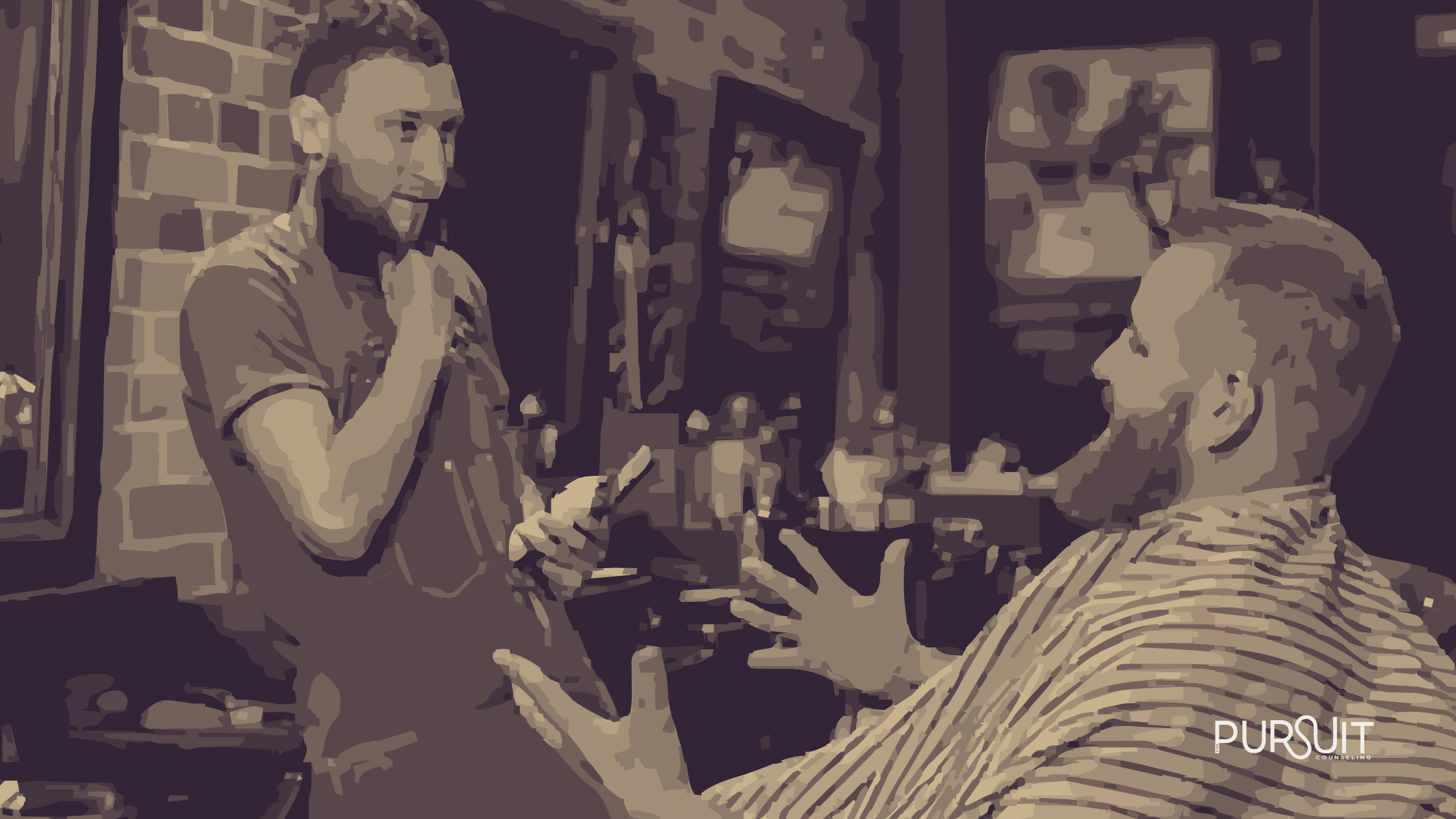by Mary Laughlin
An hour had passed since all five of us piled in the car to drive through my husband’s hometown. Country roads that were once a visual feast began to feel nauseating and the irritability I was actively trying to suppress was slowly creeping to the surface. Just when I thought I might bubble over, my husband announced that he was going to take a short detour to see his alma mater. Thankfully, he made that statement after he had turned into a gas station for a quick pit stop. I opened the door quickly and moved toward the Waffle House next door. I needed some fresh air and a chance to take inventory of what I was feeling. At my core, I wanted to be in the moment, sharing in the nostalgia, but I was having trouble getting there. As I moved my body I realized that I was feeling uncomfortable and annoyed. I was not sick, I was not hurt, and my husband was not doing anything wrong. I quietly told myself what I wanted to be true – how I wanted to show up and took action. I decided to order my favorite drink from the waitress. By the time I made it back to the car, the nausea had subsided and I felt better.
For the rest of the way home, I was able to be more present and connected with the people I cherish most instead of succumbing to the negative feelings I had prior to the pit stop. I could have let those emotions take over and had a reaction I would later regret. In that moment, however, I was able to be aware of what was happening and choose a different action. It required a willingness to notice the emotion, realize I could change my mood, and choosing a path that led me to a more desired outcome.
This approach to emotions and problem-solving is part of a therapy called Dialectical Behavior Therapy, or DBT. DBT was developed by Dr. Marsha Linehan to help those struggling with emotion regulation and Borderline Personality Disorder, but has also been effective in the treatment of social anxiety, depression, and other mental health challenges.
Curious to try it for yourself? Here are the steps:
- 1. Awareness: The first step in practicing opposite action is cultivating awareness of your emotional state and recognizing when maladaptive emotions are driving behavior. Mindfulness can help with this. Try observing and describing your emotions without judgment.
- 2. Willingness: Embracing a willingness to try something different, even when it feels uncomfortable or counterintuitive, is essential for developing the skill of opposite action. This requires a willingness to tolerate discomfort in the short term for the sake of long-term well-being (a.k.a. Choosing how you want to show up in a certain scenario).
- 3. Non-judgment: Opposite Action encourages a non-judgmental stance towards emotions, recognizing that all emotions are valid and serve a purpose. Instead of labeling emotions as “good” or “bad,” try viewing them as clues that can guide you.
- 4. Flexibility: Effective use of opposite action involves flexibility and creativity in selecting alternative behaviors that align with the desired emotional outcome. It may require some experimenting to discover which actions are most effective in different situations. In my case, getting some fresh air, movement, focusing on breathing, and hydrating were helpful in “recalibrating” my emotional brain.




